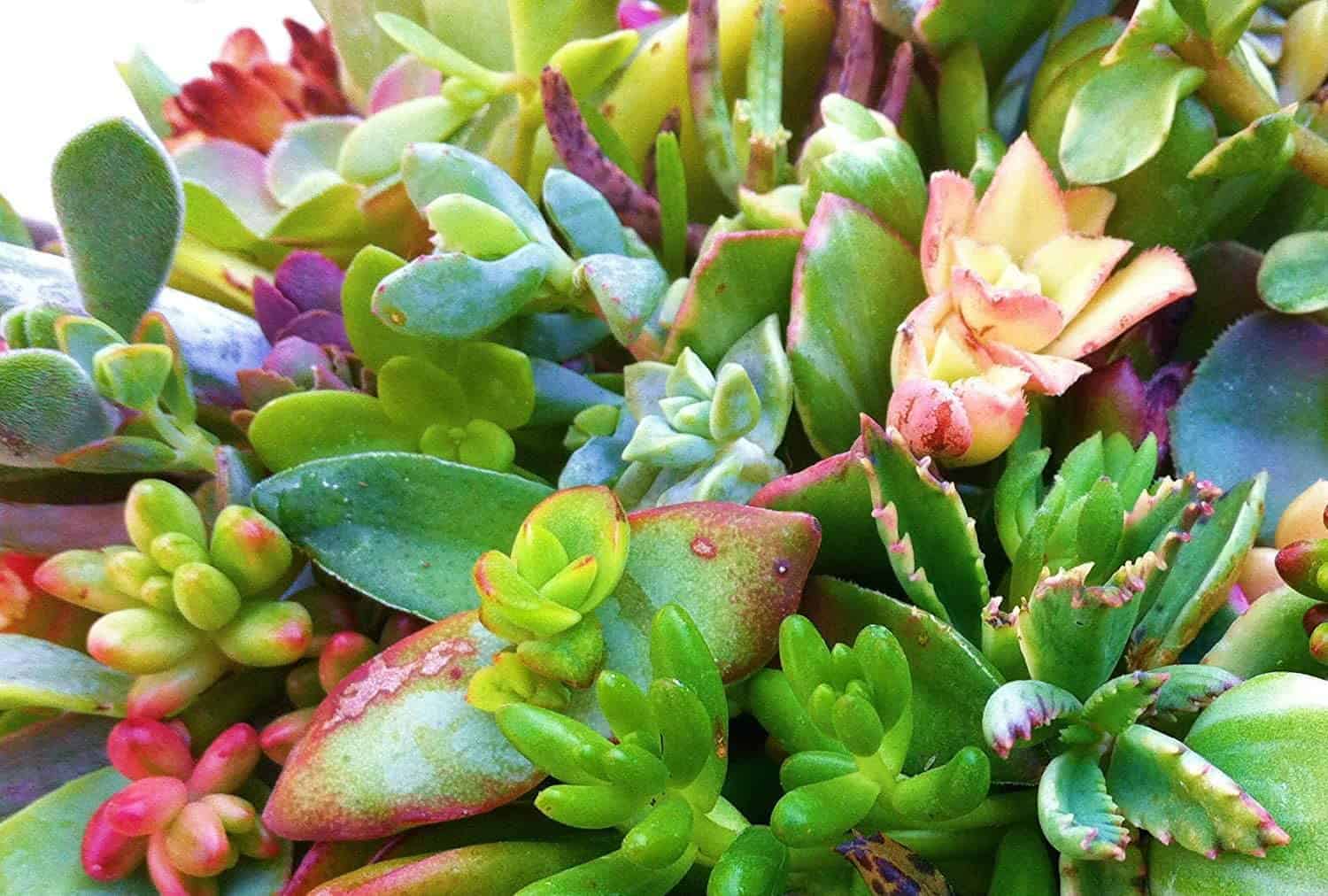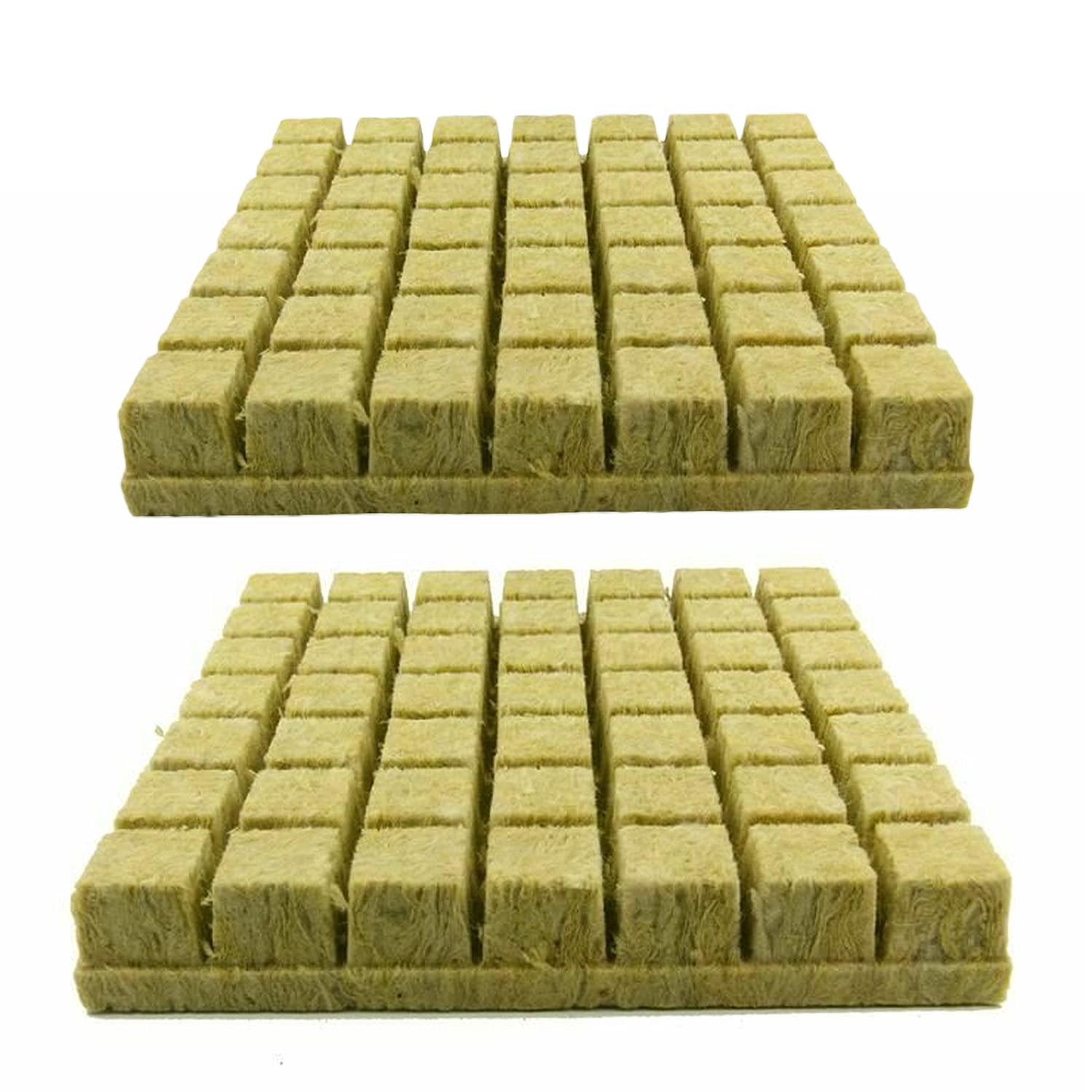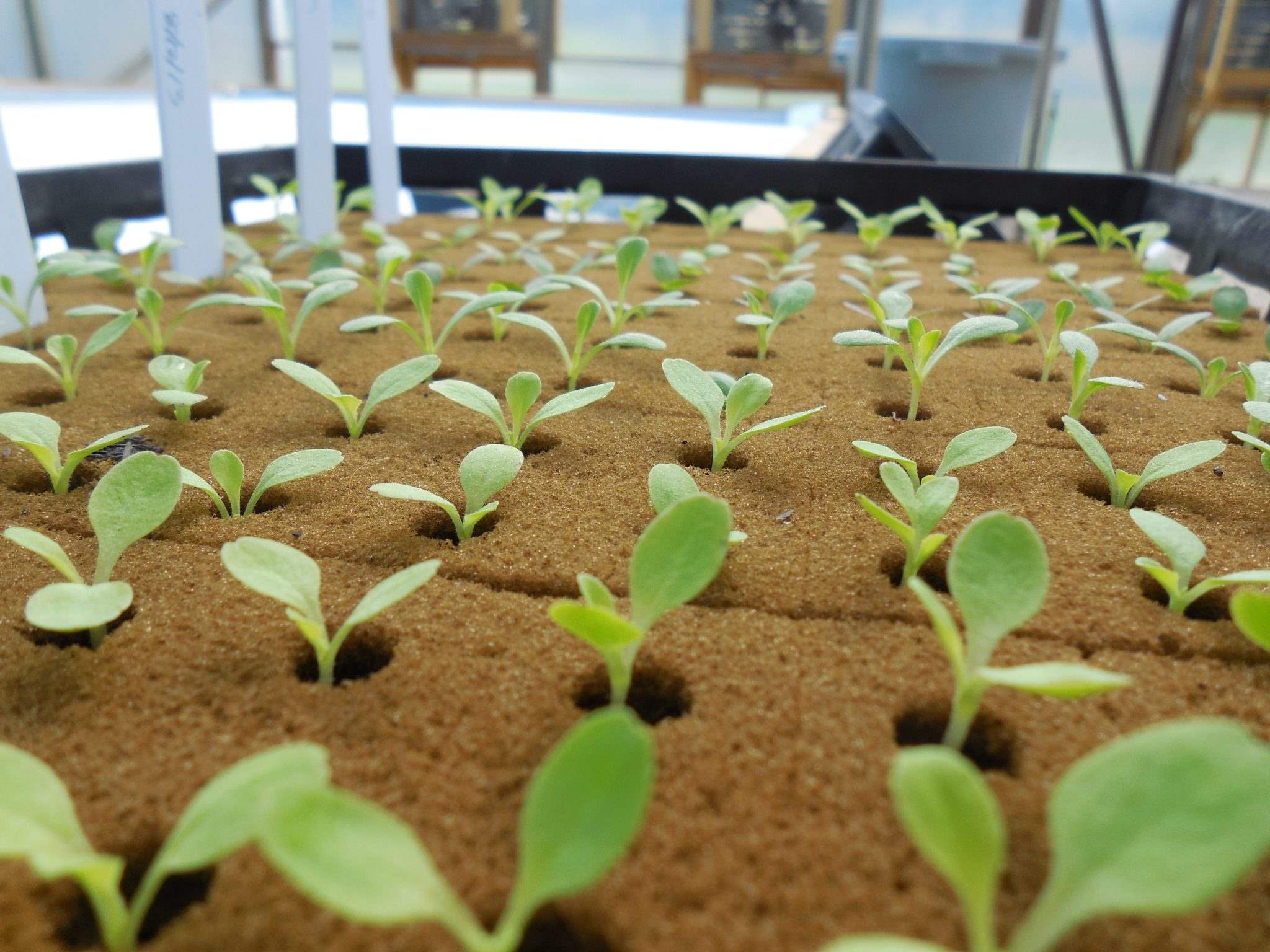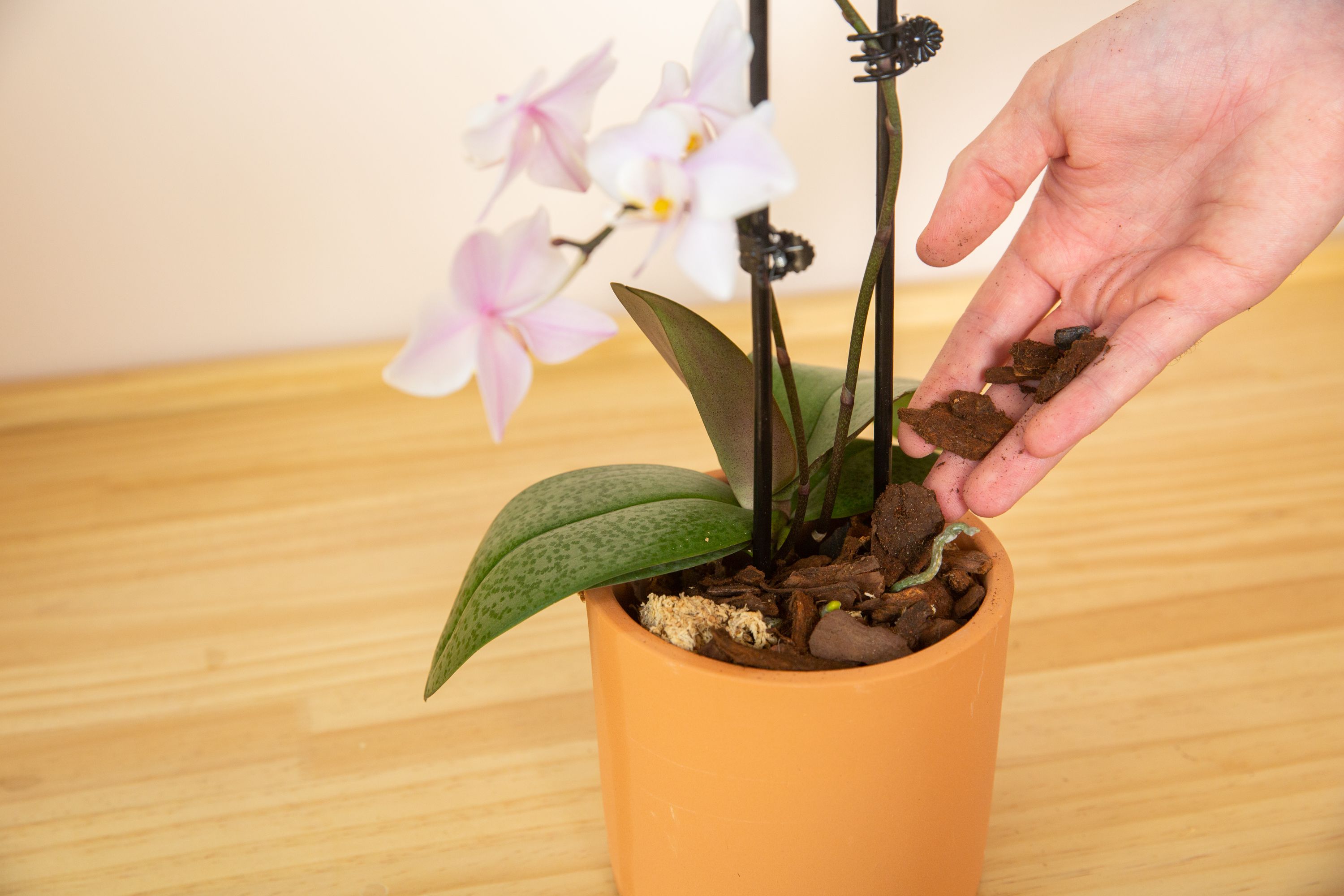Home>Types of Gardening>Edible Gardening>How To Care For Seedlings In Rockwool


Edible Gardening
How To Care For Seedlings In Rockwool
Published: January 6, 2024
Learn essential tips for caring for seedlings in rockwool for your edible gardening needs. Discover the best practices for nurturing healthy and thriving seedlings.
(Many of the links in this article redirect to a specific reviewed product. Your purchase of these products through affiliate links helps to generate commission for Chicagolandgardening.com, at no extra cost. Learn more)
Table of Contents
- Introduction
- What is Rockwool?
- Advantages of using Rockwool for Seedlings
- Preparing Rockwool for Seedlings
- Planting Seedlings in Rockwool
- Watering and Nutrient Requirements for Seedlings in Rockwool
- Temperature and Humidity Considerations
- Transferring Seedlings from Rockwool to Soil
- Common Issues and Troubleshooting
- Conclusion
Introduction
Welcome to the fascinating world of seedling care in Rockwool! As an avid gardener, you understand the importance of providing the best possible environment for your plants to thrive. In this comprehensive guide, we will explore the ins and outs of caring for seedlings in Rockwool, a versatile and efficient growing medium that has gained popularity among gardeners and horticulturists.
Whether you are a seasoned gardener or just starting out, the process of nurturing seedlings is a crucial stage in the journey towards a bountiful harvest. By choosing Rockwool as the medium for your seedlings, you are setting the stage for healthy and robust plant growth. Throughout this article, we will delve into the various aspects of using Rockwool for seedlings, from understanding its properties to mastering the techniques of planting, watering, and ultimately transitioning the seedlings to soil.
By the end of this guide, you will have gained valuable insights into the advantages of using Rockwool for seedlings, the step-by-step process of preparing and planting seedlings in Rockwool, as well as essential care practices to ensure the well-being of your young plants. Additionally, we will address common issues that may arise during the seedling stage and provide effective troubleshooting tips to help you overcome any challenges.
So, let's embark on this enlightening journey into the realm of caring for seedlings in Rockwool, where we will uncover the secrets to nurturing vibrant and thriving plants from their very beginnings. Get ready to witness the magic of nature unfold as we explore the wonders of seedling care in Rockwool!
What is Rockwool?
Rockwool, also known as mineral wool or stone wool, is a versatile and widely used growing medium in the realm of horticulture. It is composed of basalt rock that is heated to high temperatures and then spun into fibers, resulting in a lightweight and porous material that is ideal for supporting plant growth.
One of the key characteristics of Rockwool is its excellent water retention capabilities, allowing it to retain moisture while also providing ample aeration to the plant roots. This unique combination of moisture retention and aeration makes Rockwool an ideal medium for germinating seeds and nurturing young seedlings.
Furthermore, Rockwool is pH neutral, providing a stable and consistent environment for plant roots to thrive. Its inert nature means that it does not contain any nutrients, allowing growers to have precise control over the nutrient solution provided to the plants. This makes Rockwool an excellent choice for hydroponic systems and other soilless growing methods.
Due to its fibrous structure, Rockwool also offers excellent support for delicate seedling roots, promoting healthy root development and minimizing the risk of transplant shock when the seedlings are eventually transferred to soil or other growing mediums.
Rockwool is available in various forms, including cubes, slabs, and blocks, making it adaptable to a wide range of gardening and horticultural applications. Its durability and reusability make it a sustainable choice for environmentally conscious gardeners.
As we delve deeper into the world of seedling care in Rockwool, understanding the unique properties and benefits of this remarkable growing medium will empower you to provide the best possible start for your young plants.
Advantages of using Rockwool for Seedlings
Choosing Rockwool as the growing medium for your seedlings offers a multitude of advantages that contribute to the overall health and vigor of your plants. Let’s explore some of the key benefits:
- Consistent Moisture Retention: Rockwool’s ability to retain moisture ensures that seedlings have a steady water supply, promoting healthy root development and reducing the risk of dehydration.
- Excellent Aeration: The porous nature of Rockwool provides essential oxygen to the roots, preventing waterlogging and fostering optimal conditions for root growth.
- Uniform Germination: The uniform structure of Rockwool promotes consistent germination and seedling growth, leading to a more even and predictable crop.
- pH Stability: Rockwool’s neutral pH ensures a stable root environment, allowing for efficient nutrient uptake and minimizing the risk of nutrient deficiencies or imbalances.
- Support for Delicate Roots: The fibrous texture of Rockwool offers gentle support for fragile seedling roots, reducing the likelihood of damage during transplanting.
- Hydroponic Compatibility: Rockwool is well-suited for hydroponic systems, providing an inert and reliable substrate for soilless cultivation.
- Reusable and Sustainable: Rockwool can be reused for multiple growing cycles, making it an eco-friendly choice for environmentally conscious gardeners.
- Minimized Disease Risk: Rockwool’s sterile nature reduces the likelihood of soil-borne diseases, promoting a healthier growing environment for seedlings.
By harnessing these advantages, you can create an optimal foundation for your seedlings, setting them on a path towards robust growth and abundant yields. As we continue our exploration of seedling care in Rockwool, these advantages will serve as guiding principles in providing the best possible start for your young plants.
Preparing Rockwool for Seedlings
Before planting your precious seeds in Rockwool, it’s essential to prepare the growing medium to create an optimal environment for seed germination and early seedling growth. Here’s a step-by-step guide to preparing Rockwool for your seedlings:
- Soak the Rockwool: Begin by soaking the Rockwool cubes or slabs in a pH-balanced water solution. This process allows the Rockwool to absorb moisture thoroughly, ensuring that it provides a moist and hospitable environment for the seeds.
- Drain Excess Water: After soaking, gently squeeze the Rockwool to remove excess water. It’s important to achieve a balance where the Rockwool is moist but not waterlogged, as excessive moisture can impede seed germination.
- Establish Seed Holes: Using a dibble or pencil, create small indentations or holes in the Rockwool to accommodate the seeds. Ensure that the depth of the holes is suitable for the specific type of seeds you are planting.
- Monitor pH Levels: Verify the pH of the Rockwool after soaking to ensure that it remains within the optimal range for seedling growth. Adjust the pH as needed to maintain a neutral and root-friendly environment.
- Provide Warmth: Place the prepared Rockwool in a warm and well-lit area to encourage the seeds to germinate. Maintaining a consistent temperature will support the germination process and early seedling development.
By following these preparatory steps, you are creating an ideal foundation for your seedlings to thrive. The careful attention to moisture, pH levels, and environmental conditions sets the stage for successful germination and robust early growth. As we delve further into the journey of caring for seedlings in Rockwool, these preparatory measures will prove instrumental in nurturing healthy and resilient young plants.
Planting Seedlings in Rockwool
As your seedlings begin to emerge, it’s time to carefully transplant them into the prepared Rockwool, providing them with a nurturing environment for continued growth. Follow these essential steps to ensure a smooth and successful planting process:
- Handle Seedlings with Care: Gently remove the emerging seedlings from their previous growing medium, taking care not to damage their delicate roots or stems. Handle the seedlings with utmost gentleness to minimize stress during the transplanting process.
- Create Seedling Openings: Using a small dibble or pencil, make holes in the prepared Rockwool cubes or slabs to accommodate the seedlings. Ensure that the holes are deep enough to support the seedlings while allowing their emerging leaves to remain above the surface.
- Transplant Seedlings: Carefully place each seedling into the prepared holes in the Rockwool, ensuring that the roots are gently nestled into the medium and the stems are supported in an upright position. Avoid compacting the Rockwool excessively around the seedlings to maintain adequate aeration.
- Provide Stable Support: If necessary, use small stakes or plant supports to stabilize the seedlings and prevent them from leaning or toppling over as they adjust to their new environment.
- Monitor and Water Gently: After planting, observe the seedlings closely and provide gentle watering as needed to maintain consistent moisture levels in the Rockwool. Avoid overwatering, as excessive moisture can impede root development.
By following these planting guidelines, you are ensuring a seamless transition for your seedlings into their new growing medium. The careful handling and attention to the needs of the emerging plants contribute to a nurturing and supportive environment, setting the stage for healthy and vigorous growth. As we continue our exploration of caring for seedlings in Rockwool, these planting practices will serve as the cornerstone of your seedling care regimen, fostering the development of resilient and thriving young plants.
Watering and Nutrient Requirements for Seedlings in Rockwool
Proper watering and nutrient management are crucial aspects of caring for seedlings in Rockwool, ensuring that they receive the essential elements for healthy growth and development. Here’s a comprehensive guide to meeting the watering and nutrient requirements of your young plants:
Watering:
When it comes to watering seedlings in Rockwool, maintaining a delicate balance is key. Overwatering can lead to oxygen deprivation in the root zone, while underwatering can result in dehydration and stunted growth. Follow these guidelines to achieve optimal moisture levels:
- Monitor Moisture Levels: Regularly check the moisture content of the Rockwool by gently touching the medium. It should feel moist but not waterlogged. Adjust your watering frequency based on the moisture retention properties of Rockwool and the specific needs of your plants.
- Implement a Watering Schedule: Establish a consistent watering schedule based on the growth stage of the seedlings and the environmental conditions. Aim to provide water evenly throughout the Rockwool, ensuring that all seedlings receive adequate moisture.
- Use pH-Balanced Water: When watering seedlings in Rockwool, use a pH-balanced water solution to maintain the neutral pH of the growing medium. This promotes optimal nutrient uptake and prevents pH-related imbalances that can affect plant health.
Nutrient Requirements:
While Rockwool provides a stable and inert substrate for seedling growth, it is essential to supplement the plants with the necessary nutrients for their development. Here’s how you can effectively manage the nutrient requirements of seedlings in Rockwool:
- Employ a Nutrient Solution: Utilize a balanced nutrient solution specifically formulated for seedlings to provide essential macro and micronutrients. Follow the manufacturer’s recommendations for dilution and application frequency.
- Monitor EC Levels: Measure the Electrical Conductivity (EC) of the nutrient solution to ensure that it falls within the appropriate range for seedling growth. Adjust the nutrient concentration as needed to maintain optimal EC levels.
- Gradually Introduce Nutrients: When initially planting seedlings in Rockwool, start with a mild nutrient solution and gradually increase the strength as the plants mature. This gradual approach prevents shock and allows the seedlings to adapt to the nutrient-rich environment.
By carefully managing the watering and nutrient requirements of your seedlings in Rockwool, you are providing them with the essential elements for robust growth and vitality. These practices form the foundation of nurturing healthy and resilient plants, setting the stage for a successful transition to the next stages of growth. As we continue our journey of caring for seedlings in Rockwool, these watering and nutrient management strategies will play a pivotal role in ensuring the well-being of your young plants.
Temperature and Humidity Considerations
Creating an optimal environment with the right temperature and humidity levels is essential for the healthy development of seedlings in Rockwool. By understanding and managing these factors, you can provide the ideal conditions for robust growth. Let’s explore the key considerations for temperature and humidity when caring for seedlings in Rockwool:
Temperature:
Seedlings thrive within specific temperature ranges, and maintaining suitable warmth is crucial for their early development. Consider the following temperature-related guidelines:
- Germination Temperature: During the germination phase, most seedlings prefer a slightly elevated temperature to encourage the sprouting of seeds. Aim for a consistent temperature range that aligns with the germination requirements of the specific plant species.
- Optimal Growth Temperature: Once the seedlings have emerged, provide a stable and moderate temperature conducive to healthy growth. Avoid extreme fluctuations in temperature, as they can stress the young plants.
- Temperature Monitoring: Use a reliable thermometer to monitor the ambient temperature around the seedlings. Adjust the temperature as needed to create a favorable growing environment.
Humidity:
Humidity levels play a critical role in supporting seedling growth, influencing transpiration, nutrient uptake, and overall plant health. Consider the following humidity-related practices:
- Optimal Humidity Range: Seedlings generally benefit from higher humidity levels during their early stages, as it helps prevent excessive moisture loss through transpiration. Aim for a humidity range that promotes healthy leaf development and minimizes stress on the plants.
- Humidity Management: Use a hygrometer to monitor humidity levels in the vicinity of the seedlings. Employ humidifiers or misting techniques to adjust humidity levels as needed, especially in drier environments.
- Avoid Excessive Moisture: While higher humidity is beneficial, it’s important to strike a balance and prevent excessive moisture buildup, which can lead to fungal issues and other complications. Proper air circulation can help mitigate excess humidity in the growing area.
By paying close attention to temperature and humidity considerations, you can create an environment that nurtures the healthy growth of seedlings in Rockwool. These factors significantly influence the plants’ ability to absorb water and nutrients, undergo photosynthesis, and develop sturdy stems and leaves. As we continue our exploration of caring for seedlings in Rockwool, these temperature and humidity management practices will play a pivotal role in providing the best possible conditions for your young plants.
Transferring Seedlings from Rockwool to Soil
As your seedlings mature and outgrow their Rockwool environment, the time may come to transition them to soil for continued growth and development. This process requires care and attention to ensure a smooth adaptation for the young plants. Here’s a comprehensive guide to transferring seedlings from Rockwool to soil:
Preparation:
Prior to the transfer, it’s essential to prepare the soil and the seedlings to minimize stress and promote successful establishment. Consider the following preparatory steps:
- Soil Conditioning: Ensure that the soil in the destination containers or garden beds is well-conditioned and free of debris. It should offer a loose and fertile environment for the seedlings to thrive.
- Gradual Acclimatization: In the days leading up to the transfer, gradually expose the seedlings to the outdoor environment if they will be transplanted into an outdoor garden. This helps the plants acclimate to the natural conditions they will encounter.
- Watering and Nutrition: Provide the seedlings with adequate water and nutrients in the Rockwool before the transfer to support their overall health and reduce transplant shock.
Transplanting Process:
When it’s time to move the seedlings to soil, follow these steps to ensure a successful transfer:
- Gentle Removal: Carefully extract the seedlings from the Rockwool, taking care not to damage the roots or disturb the surrounding soil. Handle the seedlings with utmost care to minimize stress.
- Planting Depth: Ensure that the seedlings are planted at an appropriate depth in the soil, with the root system adequately covered and the stem positioned upright. Avoid burying the stems too deeply, as it can lead to issues such as stem rot.
- Watering and Settling: After planting, water the soil gently to help the seedlings settle into their new environment. Monitor the moisture levels to prevent the soil from becoming waterlogged.
- Post-Transplant Care: Provide ongoing care and attention to the transplanted seedlings, ensuring that they receive adequate water, sunlight, and any necessary nutrients to support their transition and subsequent growth in the soil.
By following these guidelines, you can facilitate a seamless transition for your seedlings from Rockwool to soil, setting the stage for continued growth and maturation. The careful handling and attentive post-transplant care contribute to the plants’ ability to thrive in their new environment. As we progress in our journey of caring for seedlings, the successful transfer to soil marks a significant milestone in the plants’ development, paving the way for their flourishing in the natural growing medium.
Common Issues and Troubleshooting
While caring for seedlings in Rockwool, certain challenges may arise that require prompt attention and effective solutions. By familiarizing yourself with common issues and their troubleshooting methods, you can adeptly address these concerns and ensure the well-being of your young plants. Let’s explore some prevalent issues and their corresponding troubleshooting strategies:
Damping-Off Disease:
Damping-off, a fungal disease, can affect seedlings and is characterized by wilting, rotting stems, and overall poor plant vigor. To address this issue:
- Improve Air Circulation: Enhance air circulation around the seedlings to reduce humidity levels and inhibit fungal growth.
- Adjust Watering Practices: Avoid overwatering and ensure that the Rockwool does not become waterlogged, as excessive moisture can contribute to damping-off.
- Use Sterile Tools: Employ clean and sterilized equipment when handling the seedlings to prevent the spread of fungal pathogens.
Nutrient Deficiencies or Imbalances:
Issues related to nutrient availability can manifest as stunted growth, yellowing leaves, or abnormal discoloration. To remedy these concerns:
- Monitor pH Levels: Regularly check and adjust the pH of the nutrient solution to ensure that it falls within the appropriate range for optimal nutrient uptake.
- Inspect Leaf Symptoms: Examine the appearance of the seedling leaves to identify specific nutrient deficiencies, and administer targeted corrective measures, such as adjusting the nutrient solution composition.
- Follow Feeding Guidelines: Adhere to the recommended feeding schedule and nutrient concentrations to prevent overfertilization or deficiencies.
Transplant Shock:
When transferring seedlings from Rockwool to soil, they may experience transplant shock, leading to wilting and temporary growth setbacks. To mitigate this issue:
- Provide Gentle Watering: Water the transplanted seedlings to support their recovery and help them establish in the new soil environment.
- Minimize Disturbance: Handle the seedlings with care during the transfer process to reduce stress and minimize root damage.
- Shield from Harsh Conditions: Protect the transplanted seedlings from intense sunlight and extreme weather conditions to aid their acclimatization.
By proactively addressing these common issues and implementing targeted troubleshooting strategies, you can safeguard the health and vitality of your seedlings in Rockwool. These proactive measures contribute to the resilience and robustness of the young plants, ensuring that they continue to thrive and flourish. As we navigate the intricacies of seedling care, adeptly troubleshooting and resolving challenges reinforces your role as a nurturing caretaker of vibrant and resilient plants.
Conclusion
Caring for seedlings in Rockwool presents a rewarding journey filled with nurturing, learning, and the joy of witnessing the miraculous growth of young plants. Throughout this comprehensive guide, we have delved into the intricacies of utilizing Rockwool as a versatile and effective growing medium, providing the essential foundation for the healthy development of seedlings.
From understanding the unique properties of Rockwool to mastering the art of preparing, planting, and nurturing seedlings in this medium, you have gained valuable insights into the nuanced care practices that contribute to the success of your young plants. The advantages of using Rockwool, including its consistent moisture retention, excellent aeration, and support for delicate roots, have empowered you to create an optimal environment for robust seedling growth.
By addressing crucial aspects such as watering and nutrient requirements, temperature and humidity considerations, and the seamless transfer of seedlings from Rockwool to soil, you have embraced a holistic approach to nurturing vibrant and resilient plants. Moreover, through the exploration of common issues and effective troubleshooting strategies, you have equipped yourself with the knowledge and skills to overcome challenges and ensure the well-being of your seedlings.
As you continue your journey of tending to seedlings in Rockwool, may this guide serve as a trusted companion, offering guidance, inspiration, and practical wisdom. Your dedication to providing the best possible care for your young plants will undoubtedly yield a bountiful harvest and a flourishing garden teeming with vitality.
Embrace the art of seedling care in Rockwool with confidence, knowing that your commitment to nurturing healthy and robust plants will yield a tapestry of natural beauty and abundance. As you witness the tender shoots mature into thriving specimens, may the joy of cultivating life and the wonders of nature continue to inspire your gardening endeavors.









